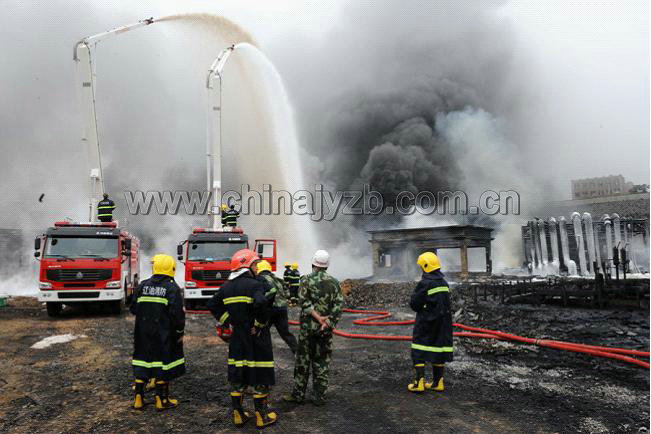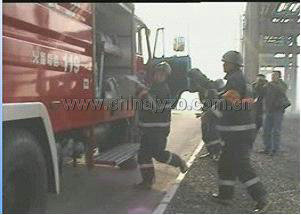
First, the principle of fire fighting
(I) The principle of centralized deployment and centralized use of fire extinguishing power
Due to the characteristics of the oil fire in the refinery, when fighting such fires, it is more necessary to focus on mobilizing troops, concentrating on the use of troops and timely adjustment of the strength so that the entire fire fighting operation can always maintain superior fire extinguishing power for cooling or extinguishing the fire. The land holds the initiative in combat operations and thus wins the full victory of fire fighting.
(B) The principle of implementing unified command
The task of fighting fires in refineries is both arduous and complex, and it is also very risky, and it is particularly important to implement unified command of the fire. Due to the high degree of automation and production continuity in the refinery production process; the amount of combustible materials inside the unit is long and the duration of the combustion is long; the tasks of cooling and extinguishing fires are heavy in fighting units; when fighting fires, the technical and tactical requirements for process measures and fire fighting are high Logistics support and ensuring the safety of participating personnel all require strong command of the fire field.
(3) It must adhere to the fire-fighting principle based on the premise of no rekindling
When fighting an oil refinery fire, there are usually two situations: First, when the fire starts, the fire source is small, the combustion range is small, and the process is simple and easy. After the combustion is extinguished, there will be no re-explosion. Quickly eliminate the fire quickly; the second situation is that there are many fire sources, the scope of combustion is large, the process technology is complicated and difficult, or because of the fire extinguishing power, fire water supply, insufficient extinguishing agent and other conditions, it cannot be easily organized. Initiate a general fire extinguishing attack to prevent re-ignition or double explosion.
(IV) Giving full play to the principle of effective coordination of various fire-fighting equipment and fire extinguishing agents
1. Various types of fixed fire-fighting facilities 2. When mobilizing more vehicles and equipment, in order to give full play to the effectiveness of various types of equipment, it is necessary to strengthen the coordination of various types of equipment. If various types of equipment do not cooperate well, they will not only fully function but may also interact with each other. offset.
(5) Strengthen safety protection and avoid personal injury or death
Only by ensuring safety can we effectively eliminate the fire. This is an extinguishing action guideline that must be observed in fire fighting practice. The hazards of explosions, collapses, high temperatures, and poisonous gases in petrochemical fires should not only be highly valued in the thinking of each commander, but also require strict security measures in action.
When extinguishing explosive devices or tanks, precautions must be taken from the selection of parking positions and offensive positions to the adoption of cooling explosion protection measures. When parking, the front shall be in a direction to facilitate retreat. The position of the offensive position shall make full use of the cover of the ground and ground objects. The uninterrupted cooling of the equipment with explosion hazard must be ensured on the fire field.
II. Actions for fighting fires in oil refineries
(I) Strengthen the first batch of motivation
After the fire brigade (large) team dispatching command center (room) receives the alarm, the dispatching commander (telephone operator) shall dispatch the fire extinguishing force according to the fire location of the alarm and the reported fire situation according to the fire extinguishing operation plan (plan) to ensure the fire extinguishing The fire-fighting forces required for combat and the maneuver forces necessary at the scene of the fire create favorable conditions for a good start.
(B) Fully conduct fire reconnaissance
In order to effectively organize and direct firefighting and fighting, the combatants must quickly, comprehensively, and accurately ascertain the situation after arriving at the fire scene. Respond to the conditions of the firefield and take necessary measures to control the fire development or extinguish the fire so as to reduce blindness. When fighting a fire at an oil refinery, the following conditions should be identified:
1. Burning site. If a fire occurs in the production plant area, the commander of the fire site must ascertain the physical and chemical properties and quantity of the combustion materials, and the combustion is a surface fire, a space fire, or a high-altitude fire; the exact location, quantity, and combustion intensity of the fire source point , combustion patterns and spread of fire direction and approach, fire on the surrounding production equipment, building components, burning, baking degree and so on.
2. The situation of the production unit of the fire unit and the process flow. Which should mainly identify the integrity of the production device or damage to the site and extent of damage, as well as the production process temperature, production pressure, etc., whether it can be partially or completely shut down, stop production, cut off the material?
3. If someone in the fire area is threatened by a fire, the location, number, physical condition of the rescued person, as well as rescue methods or rescue tools are required;
4. Whether there is a risk of cracking, explosion or deformation or collapse of building components in the production facility of the fire source area and in the production facility subject to flame grilling;
5. The fire commander must predict the development trend of the disaster situation based on the fire situation of the reconnaissance, and fully and accurately estimate the manpower, equipment, and special rescue tools required for fire fighting, rescue operations, and so on;
6. Carefully check the feasibility of fire extinguishing and the timing of fire extinguishing and the necessary fire-fighting conditions for the fire brigade. In particular, check whether the re-ignition and re-explosion can occur after the fire is extinguished. This requires the identification of the entire production process, the physical and chemical properties of the material in the production zone, the quantity and temperature, pressure and other basic conditions of the material, and has not organized and commanded the fire to make a correct decision and put forward a reliable scientific basis.
(1) Dispersion direction, speed, and range of material after running and leaking from the production device and pipeline;
(2) The area and facilities of the downwind direction where combustible gases are run from the production facilities and pipelines;
(3) Injecting direction strength of flammable flammable liquids or flammable gases after production equipment with pressure, after pipeline rupture;
(4) Equipment that is threatened by heat or heat radiation.
(5) The high production equipment ground fire propagation direction and high fire spread direction downward (6) When the pipeline in the underground trench breaks, the direction of flow of flammable combustible liquid or the diffusion direction and range of combustible gas;
(7) The flow of flammable flammable liquids on the ground to the low ground or the flow direction of the underground trenches and troughs.
(three) process fire
When a fire occurs during the operation of a refinery production plant, a thorough fire extinguishing measure is "process fire suppression." The so-called process fire extinguishing is based on the high degree of continuity and irreversibility of the refinery production process. The implementation of local or total flammable materials, cooling, pressure reduction, diversion, and steam fire extinguishing techniques will completely eliminate the fire.
Steam fire 
| Extinguishing target name | Supply intensity (kg/s.m3) |
| Plant with doors and windows, heating furnace, oil pump room | 0.003 |
| Closed equipment (such as heating furnace back elbow box) | 0.0015 |
| Wax oil, residual oil, liquid asphalt tanks, etc. | 0.003 |
★ Case 7: In 1997, a fire broke out in the decompression tower of Daqing Petrochemical General Plant. The personnel were trapped and used the steam fire extinguishing measures to properly extinguish the fire.
2. Close valve
★ The fire brigade undertakes cooling and protection Missions ★ Fight the flame near the valve ★ Ensure safety
3. Open valve diversion
★ Choose a good guide ;
The first thing to do is to determine the direction of the reverse flow, the route, area, or container that flows through.
★ prevent negative pressure .
When opening a valve to divert or discharge gas or liquid, positive pressure must be ensured in the container.
Automatic Sliding Doors can either be a single door sliding in one direction or bi-parting doors where each door leaf slides in the opposite direction. They are often used in grocery stores, entrances to shopping malls, hospitals and other applications where you want to provide your customers a hands free, safe and easy access to your building.
Hospitals
Airports
Retail centers
Pharmacies
Hotels
Grocery stores
Hardware stores
Sporting goods stores
And more
In addition, one of the biggest benefits of automatic doors is energy savings. Since these doors only open when someone comes in or out of your building, it prevents the loss of energy when a door may otherwise be left open for a long time.
Hongfa will only dispatch highly trained CE Certified inspector/technicians to inspect, repair, service or replace automatic doors. This ensures we provide the most efficient and safest door repair for your business.
Automatic Sliding Door,Automatic Sliding Glass Door,Sliding Door With Automatic System,Automatic Stacking Sliding Glass Door
Shenzhen Hongfa Automatic Door Co., Ltd. , https://www.highspeedshutterdoor.com